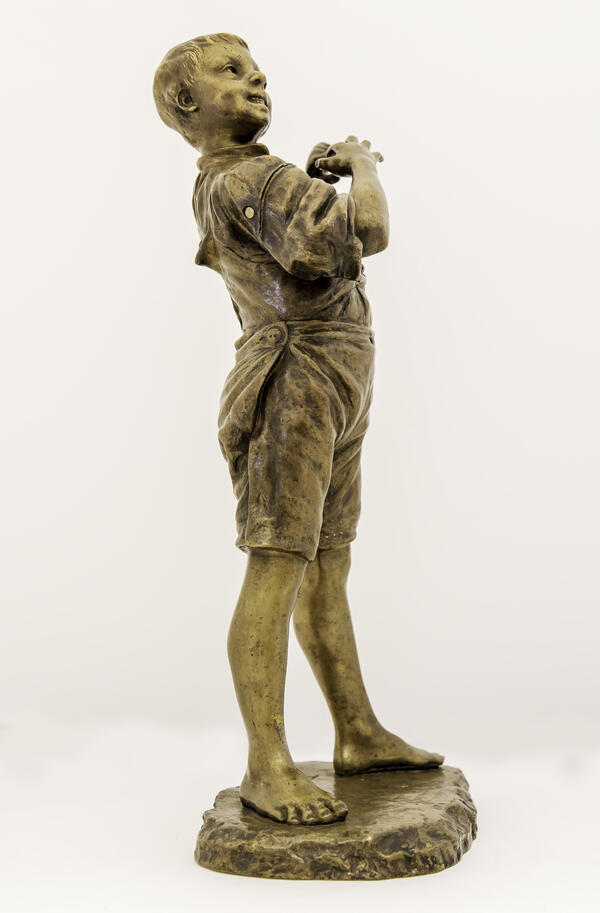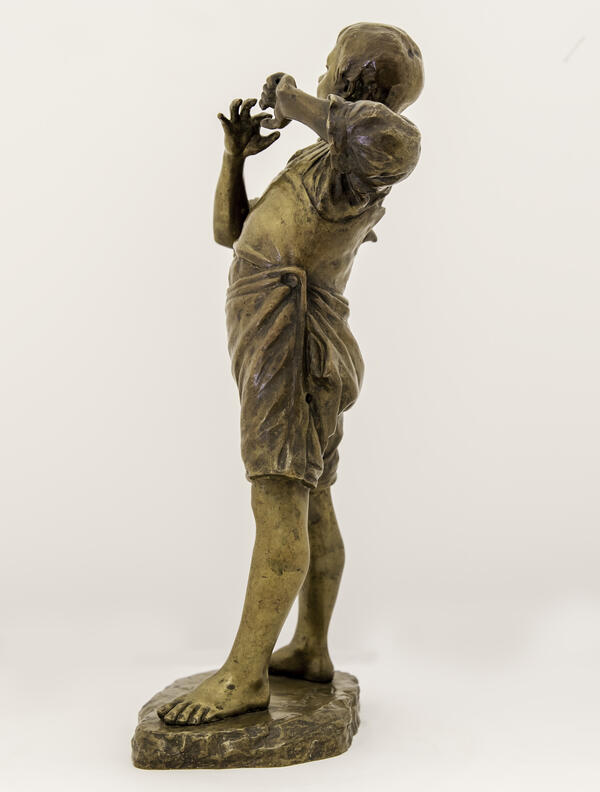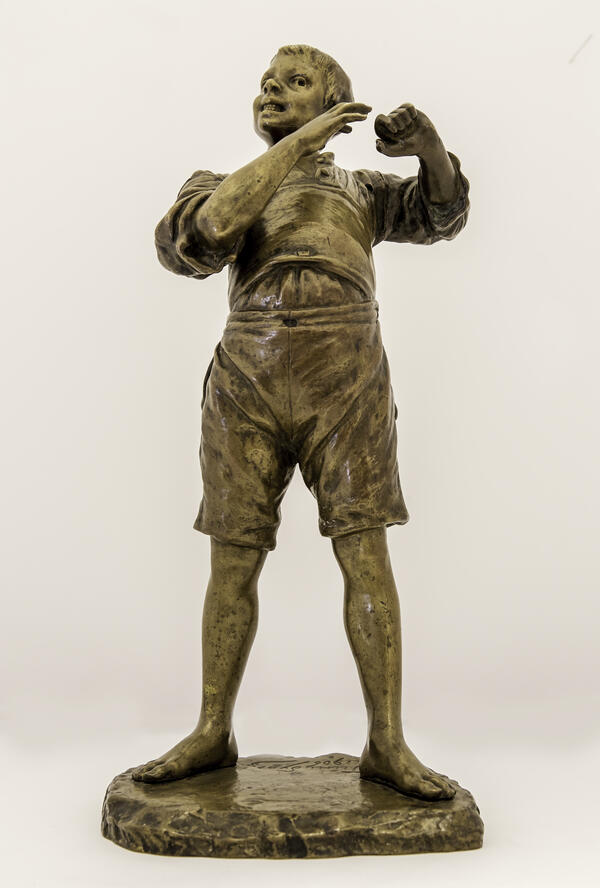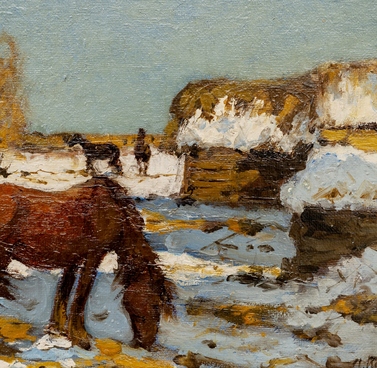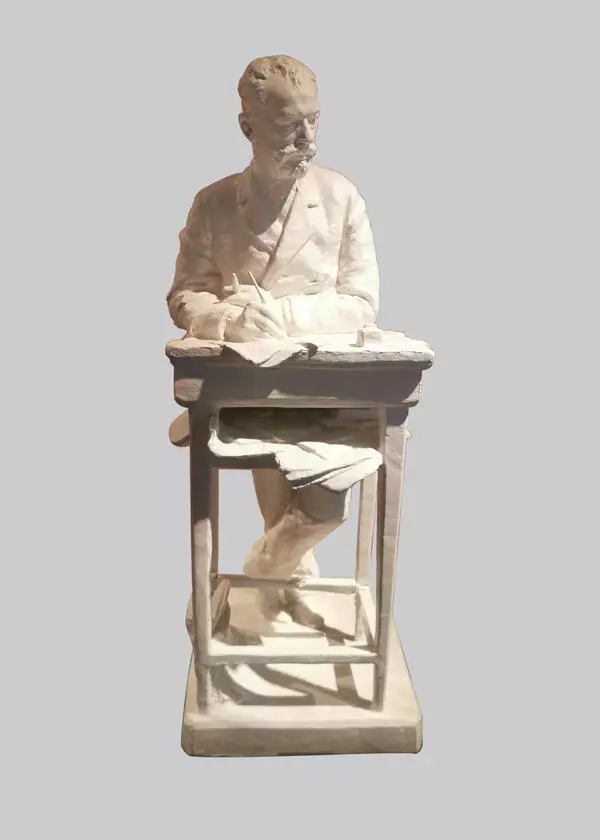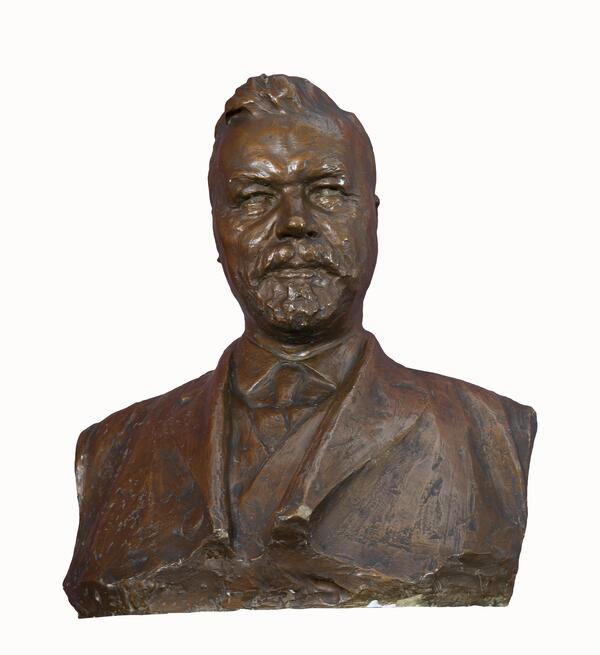Ilya (also known as Eliash) Ginzburg was a sculptor and teacher. He worked in the studio of Mark Matveyevich Antokolsky in Saint Petersburg (from 1870) and studied at the Imperial Academy of Arts under Alexander Romanovich von Bock, Nikolay Akimovich Laveretsky and Ivan Ivanovich Podozyorov.
The second half of the 19th century was the period of extensive development and flourishing of Russian genre painting. The heyday had an impact on the development of a similar genre in indoor sculpture. The first half of the 19th century is characterized by the development of monumental and decorative sculptures, while the second half of the 19th century was characterized by the predominant progress and widespread use of indoor sculptures and especially figurines.
The sculpture and painting of that time witnessed an expansion in the range of subjects and a rising interest in depicting the life and work of ordinary people. It is in small indoor statues that masters were able to achieve a certain degree of authenticity in subjects, images, clothes and details and find the best artistic means and methods to expand the range of subjects in sculpture in general. The sculptural genre works prevailed over historical sculptures and portraits. The genre sculpture became closely associated with the concept of Realism as it developed and brought the narrative forward.
The sculpture “A Young Musician”, or “A Boy Playing the String” is a genre composition. The accurately and carefully outlined details suggest that the statue bears a resemblance to the sitter. At the same time, the sculpture has no elements of the environment present. Even the string, important to the idea of the sculpture, is absent.
The sculptor’s primary task was to render the boy’s facial expression and emotions. The boy holds one end of the string (which is most likely a thread) in his teeth and the other in his left hand, extending it to extract the sound by plucking it with his other hand. Standing with his back straight, shoulders turned, hands beautifully placed and head raised and turned slightly to the side, the young musician’s posture matches his confident mood.
The image is characterized by the sculptor’s keen observation of the boy and beguiling sincerity in interpreting him as a street musician. The work also seems to have its own conditional space.
The sculpture belongs to a number of Ilya Ginzburg’s works dedicated to children.

